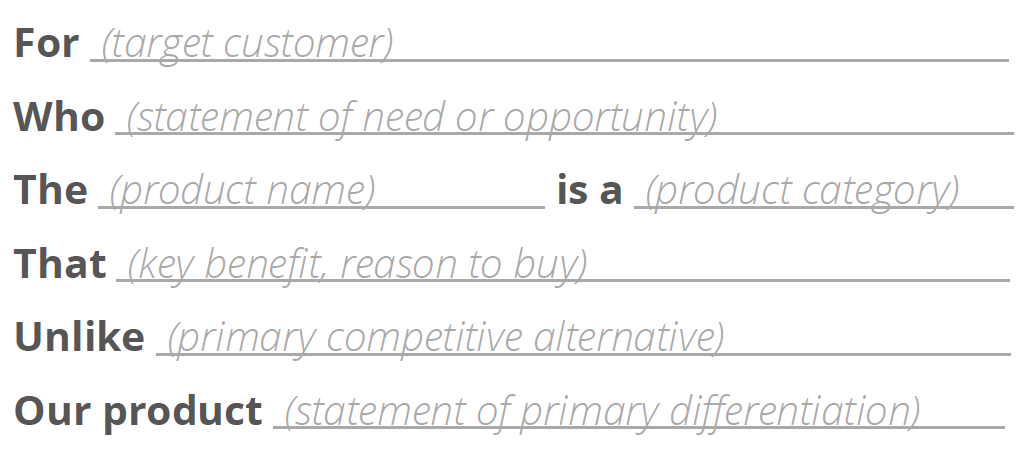When it comes to creating successful products, having a clear and compelling product vision is a critical factor.
A product vision describes the direction and purpose of a product, guiding the entire development process.
In this blog post, we will explore the key elements of shaping a product vision and how it benefits Agile product owners.
By the end, you’ll be equipped with the knowledge to create an inspiring product vision that leads to long-term success.

Definition of A Product Vision
A product vision is a clear and inspiring statement outlining the future state of a product, guiding its purpose and direction.
It serves as the guiding star, aligning the team and focusing efforts toward a common goal.
A compelling vision drives passion and commitment, leading to exceptional products that make a lasting impact on customers’ lives.
How a Product Vision Benefits Agile Product Owners
An Agile product owner plays a crucial role in delivering successful products in fast-paced, ever-changing environments.
A well-defined product vision offers numerous benefits that empower Agile product owners to navigate challenges, align their teams, and create outstanding products.
The most significant benefits of a product vision for Agile product owners are:
Clarity and Focus: A product vision provides clear direction and focus for the Agile team, helping them stay on track amidst fast-paced changes and iterations.
Customer-Centricity: The vision prioritizes customer needs, ensuring the product addresses user requirements effectively and delivers value to the target audience.
Motivation and Inspiration: An inspiring product vision energizes the team, driving commitment and purpose in their pursuit of creating an outstanding product.
Stakeholder Alignment: The product vision fosters collaboration and communication among stakeholders, ensuring a shared understanding of the product’s goals and strategy.
Long-Term Strategy: While Agile focuses on short iterations, the product vision keeps the long-term strategic roadmap in mind, guiding the team towards the ultimate vision for the product.

Understanding the Elements of a Product Vision
A well-defined product vision forms the cornerstone of any successful product development journey. In this section, we will delve into the key elements that make up a compelling product vision and its significance in guiding both the product team and the overall company vision.
Let’s explore the essential components of a product vision statement and how it plays a pivotal role in ensuring a cohesive and successful product outcome.
What is a Product Vision Statement?
At the core of a product’s purpose lies the product vision statement. This powerful and concise statement outlines the product’s future state, serving as a guiding light for the entire product development process.
It captures the essence of what the product aspires to be and the impact it aims to make in the lives of its target customers. The product vision statement acts as a compass, providing direction and focus to Agile product owners and their teams.
Here is one of the product vision statement examples on the topic of Electric Mobility for a Sustainable Future:
“Our vision is to revolutionize urban transportation by providing electric mobility solutions that are sustainable, efficient, and accessible to all. We envision a future where our electric vehicles seamlessly integrate with public transportation, reducing carbon emissions and alleviating traffic congestion.
Through continuous innovation and customer-centric design, we aim to empower people to embrace electric mobility as a cleaner and greener alternative, shaping a sustainable future for generations to come.”
Also, you can use this format to guide your thinking:
[Product] is for [Target Customer] who [statement or need of opportunity]. The
Apple iWatch
$430.00Apple iWatch
$430.00
Components of a Product Vision Statement
A well-crafted product vision statement comprises several essential components that convey its purpose and uniqueness. It starts with a clear description of the product itself, followed by the primary market it targets.
Additionally, the statement highlights the key benefits it offers to customers, differentiating it from other products in the market. By incorporating these elements, the vision becomes a compelling narrative that resonates with all stakeholders and inspires action.
The Role of Product Vision in Company Vision
A product vision goes beyond merely defining the product; it plays a vital role in shaping the overall company vision. The product’s purpose and direction align with the company’s long-term goals and objectives, ensuring that product development efforts are cohesive and contribute directly to the company’s success.
The product vision acts as a bridge, connecting the product group with the broader company approach and vision and creating synergy across all departments.

Creating a Cohesive Vision for Product Success
Building a successful product requires more than just an agile vision statement; it demands a cohesive and united approach. The product vision must be well-communicated and understood by the entire product group, stakeholders, and leadership.
By sharing the same vision, everyone involved can align their efforts, making decisions that contribute to the common goal. A cohesive vision fosters collaboration, minimizes misinterpretations, and maximizes the potential for product success.
Product Vision Template
A product vision template is a structured framework that helps Agile product owners and teams craft a clear and convincing product vision statement. It provides a guideline to ensure that essential elements are included, making the vision impactful and effective.
Below is a product vision template with key sections to consider:

Product Description: Describe the product succinctly, outlining its core purpose and intended use. This section sets the stage for the vision, providing a clear understanding of what the product aims to achieve.
Target Market: Identify the primary market and target audience for the product. Understand their pain points, needs, and aspirations to align the product’s direction with customer expectations.
Unique Value Proposition: Highlight the key benefits and differentiating factors that set the product apart from competitors. Showcase the value the product brings to customers and why it is the best solution for their needs.
Long-Term Impact: Envision the future situation of the product and the positive change it will bring to customers’ lives. Paint a compelling picture of the product’s role in improving the target audience’s experiences and outcomes.
Company approach Alignment: Ensure the product vision aligns with the broader company approach and long-term goals. This section demonstrates how the product contributes to the overall success and growth of the company.
Measurable Objectives: Set specific and measurable objectives that align with the product vision. These objectives serve as milestones to gauge the product’s progress and success over time.
Core Values and Principles: Articulate the core values and principles that guide the product’s development. Aligning the product with the company’s values ensures consistency and integrity in its execution.
Communication and Visualization: Consider how the product vision will be communicated to the team, stakeholders, and customers. Visualization tools like product vision boards can help make the vision tangible and easy to understand.
Adaptability and Iteration: Recognize that the product vision is not set in stone and may evolve over time. Embrace Agile principles to iterate and refine the vision based on real-world feedback and changing market conditions.
Crafting an Inspiring and Customer-Focused Product Vision
To create a product vision that captivates and excites, it’s essential to put the customer at the center. Identify the target customer and understand their pain points and needs. By addressing these customer challenges, the product can provide real value and drive positive change in their lives.
Highlighting the key benefits and primary differentiation of the product allows it to stand out in a competitive market. A convincing product vision emphasizes what sets the product apart from other offerings and why customers should choose it over alternatives.
An inspiring product vision not only addresses current customer needs but also envisions the product’s impact on customers in the future. By envisioning the positive change the product will bring, the vision becomes more motivating and aspirational.

Envisioning the Future Situation: Product Visioning Process
Developing a clear product vision requires an intimate knowledge of the product category and the market it operates in. Understanding market conditions and analyzing competitors’ products provide valuable insights that help shape the vision effectively.
A successful product visioning process involves visualizing the future situation of the product. It means knowing where the product is headed and how it fits into the overall company strategy. Utilizing four key principles – clarity, simplicity, realism, and motivation – strengthens the vision and ensures it resonates with the team.
Product Strategy
Product strategy is a high-level plan that defines the direction and approach for a product’s development and growth. It outlines the key decisions and actions necessary to achieve the product vision and aligns the product’s goals with the overall business objectives.
A well-defined product strategy serves as a roadmap that guides the product group in making informed decisions throughout the product lifecycle.

Communicating and Sharing the Product Vision
An effective product vision is one that is shared and understood by the entire product team.
Communication is key to achieving a shared vision. Ensuring the product team buys into the vision helps align efforts and foster a collaborative environment.
Gaining buy-in from stakeholders and leadership is equally important. By presenting a compelling elevator pitch, product owners can secure the support and resources needed to execute the vision successfully.
A product vision board serves as a visualization tool to keep everyone on the same page. It provides a quick and clear overview of the product’s purpose, goals, and strategy.
Compelling Product Vision Statements
Examining successful companies with inspiring product visions can provide valuable insights. By analyzing the vision statements of market-leading products, a product owner can gain inspiration and learn from best practices.
An agile vision statement aligns with the iterative nature of Agile product development. It emphasizes the importance of adaptability and responsiveness to changing market conditions.

Leading the Product Team toward the Vision
A product owner plays a pivotal role in building and maintaining the product vision. Their leadership is essential in guiding the product team toward the vision’s realization. Collaboration with development teams and project managers ensures that the vision translates into actionable plans.
Empowering product managers and leaders to champion the vision is crucial for its success. By giving them the necessary resources and autonomy, the product vision becomes a driving force in achieving success.
Building Blocks for Product Vision Execution
Creating a product roadmap that aligns with the vision allows for a systematic approach to product development. Agile decision-making ensures that the team stays on course and responds effectively to feedback and changes.
Adapting to changing market conditions and staying up-to-date with the world’s information allows the product vision to remain relevant and impactful over time.
Evaluating Product Success and Iterating the Vision
Measuring product success based on the vision’s goals provides valuable feedback for improvement. An iterative approach allows product owners to enhance the vision continuously, making it more compelling and effective.
A case study on the Tesla Model demonstrates the power of a vision-driven approach. By staying focused on the vision of sustainable transportation, Tesla has revolutionized the automotive industry.

Conclusion
Shaping a product vision is a vital skill for Agile product owners. A compelling and customer-focused vision guides product development aligns efforts and leads to long-term success.
By understanding the key elements of a product vision and learning from practical examples, product owners can create inspiring visions that drive positive change and deliver exceptional products.
So, let’s embark on the journey of crafting remarkable product visions and shaping the future of products.

People Also Ask (FAQs)
What is a product vision statement, and why is it essential for an Agile product owner?
A product vision statement is a concise and powerful narrative that outlines the future situation of a product and its purpose. The product vision statement acts as a guiding light for Agile product owners, providing clarity and focus in a fast-paced development environment. With a well-defined product vision statement, Agile product owners can align their teams, make informed decisions, and create a shared understanding among stakeholders, driving the product’s success.
How do product vision statements differ from vision statements in general?
Product vision statements are specifically focused on describing the future state and purpose of a product, whereas vision statements in general can apply to an entire company or organization. While both serve as guiding principles, product vision statements concentrate on the product’s unique value proposition and target market. On the other hand, vision statements at the company level encompass broader aspirations and overarching goals that drive the entire organization.
What role does a product vision board play in shaping a product vision?
A product vision board is a visual tool that supports the creation and communication of the product vision. It brings together essential elements, such as the product’s description, target market, value proposition, and key differentiators, in a concise and visually appealing format.
The product vision board helps Agile product owners and teams easily understand and communicate the vision’s core elements, fostering alignment and collaboration. It serves as a valuable reference throughout the product development process, ensuring that the team stays focused on achieving the shared vision.




